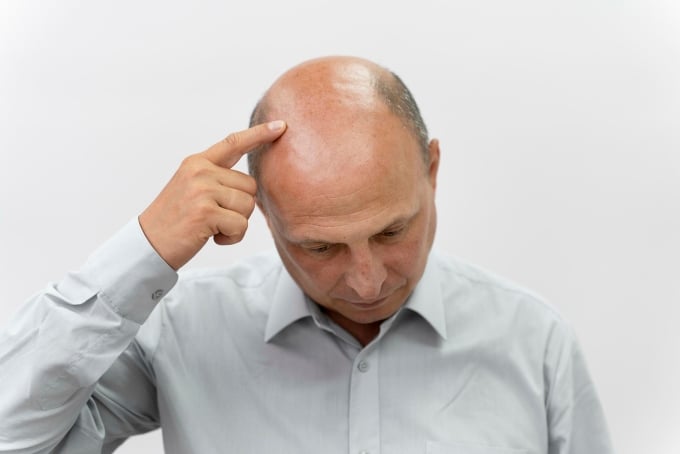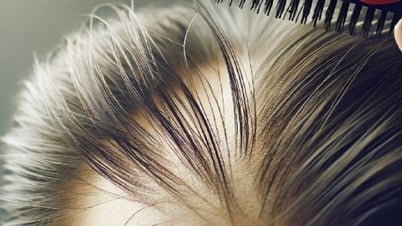High levels of androgen hormones or genetic factors can cause men to gradually lose hair at the top of their heads, causing baldness.
According to the American Academy of Dermatology (AAD), male pattern baldness, also known as androgenetic alopecia or hereditary hair loss, is the most common type of hair loss in men. In fact, baldness can occur in both sexes and at many ages.
Male pattern baldness is characterized by a gradual receding of the hairline, with thinning of the hair at the crown, forming a circular bald patch that increases in size over time. As the hairline continues to recede, the hair at the crown becomes finer and thinner, eventually forming a U-shape with hair on the sides of the head and a bald spot at the crown.
Hair growth slows and falls out as a normal part of aging. However, male pattern baldness is different from hair loss due to aging. This condition can begin in the late teens or early 20s and progresses over time, becoming more common in middle age. Here are two causes of this condition in men.
Genetics : This is the most common cause, and tends to run in families. Men with bald relatives are at risk.
The genetics that cause baldness are unclear, as environmental factors may also play a role. However, the AAD suggests that genes linked to male pattern baldness cause hair follicles to shrink in size, stopping hair growth, leading to bald patches on the head.
Androgens: Male pattern baldness is also linked to the sex hormone androgen, specifically dihydrotestosterone. Androgens play an important role in male and female sexual development. Too much androgen can cause the hair growth cycle to shorten, which means hair falls out earlier; hair grows back shorter and thinner, or new hair is delayed to replace lost hair.
Both genetics and androgens may contribute to male pattern baldness. Variations in certain genes cause an overreaction to androgens, leading to hair loss. For example, a variation in the AR gene has been shown to increase the activity of the androgen receptor in hair follicles, increasing the risk of hair loss.

Men's bald areas are often U-shaped. Photo: Freepik
Baldness cannot be prevented, but there are some methods that can reduce hair loss and stimulate new hair growth. Men should start treatment as soon as they notice signs of hair loss for best results. Some topical products such as shampoos or medications are prescribed by a dermatologist.
Additionally, some medical procedures to treat baldness include:
Hair transplant: Hair follicles are removed from the growing area and transplanted into the bald area. This procedure may need to be repeated several times.
Platelet-rich plasma injections : Plasma (the liquid part of blood) containing platelets (tiny cells involved in blood clotting) is injected into the scalp to stimulate hair growth.
Laser or light therapy: Laser or light energy is applied to the remaining hair follicles on the head, stimulating hair growth.
Men with baldness should see a dermatologist - cosmetic specialist for examination and appropriate treatment.
Mr. Ngoc (According to Verywell Health )
Source link




































































































Comment (0)